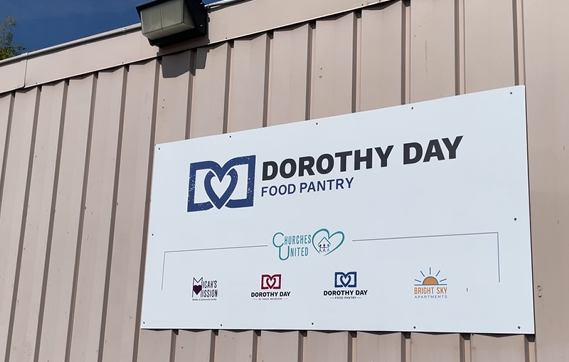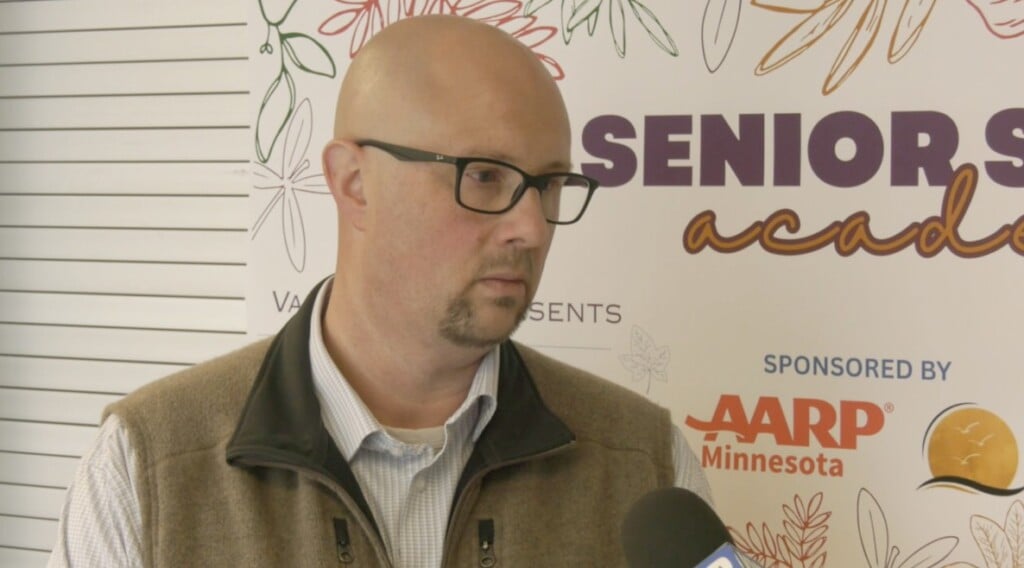Homelessness increases in North Dakota as population, housing costs also rise

BISMARCK, N.D. (North Dakota Monitor) — People experiencing homelessness in North Dakota are increasing as the state’s population continues to grow and affordable housing, shelters and resources struggle to keep up with demand.
During the 2025 legislative session, lawmakers funded a study as part of the Industrial Commission budget to look at possible solutions to the issue and held their first hearing on the matter last Thursday during a meeting of the interim Human Services Committee.
Jena Gullo, executive director for the Missouri Slope Areawide United Way in Bismarck, which operates an overnight shelter, said the organization served 531 homeless people last year, a 78% increase compared to data collected in 2020. She added the facility has 42 beds, but typically shelters about 100 people each night with a majority coming from outside of Bismarck-Mandan because of a lack of homeless shelters in the region.
“With the population increasing and the needs increasing, we’re seeing a dramatic increase,” Gullo said. About 32% of those seeking shelter are Native American, she said, an overrepresentation of that demographic group which makes up about 5% of the population in North Dakota.
Chandler Esslinger, executive director of the Fargo-Moorhead Coalition to End Homelessness, said shelters are being “overwhelmed” because people cannot find permanent housing.
“It’s no secret that homelessness has been increasing in Fargo-Moorhead, especially with more people living unsheltered in the community,” Esslinger said. “We know that our system lacks sufficient housing and supportive services and that can keep people trapped in homelessness.”
According to a Legislative Council memo, data showed 784 people were considered homeless, on one night in January 2023 during a point-in-time survey administered by North Dakota Continuum of Care. The number of people considered homeless in North Dakota increased to 865 in 2024 and stayed relatively flat at 861 in 2025 based on the annual one-day counts, according to data collected by North Dakota Continuum of Care.
Legislative Council said identifying the accurate statistics for the number of people experiencing homelessness in North Dakota can be difficult because of differing definitions of homelessness, the mobility of the population, poor data from rural areas and the cyclical nature of homelessness.

Jessica Thomasson, executive director for human services at the North Dakota Department of Health and Human Services, speaks to lawmakers about homelessness during a committee hearing on Sept. 4, 2025. (Photo by Michael Achterling/North Dakota Monitor)
Jessica Thomasson, executive director for human services at the North Dakota Department of Health and Human Services, said the department collected data on rental assistance and homelessness over the past three years. That data shows every county in North Dakota has had someone reach out to the department because they were at risk of losing their housing or they were experiencing homelessness.
“It really is not limited to large population centers,” Thomasson said. “It truly does happen wherever you have people living and working in your communities. Sometimes lifestorms throw you into a housing crisis.”
Over the last three years, nearly 21,000 North Dakotans applied to ND Rent Help for emergency rental assistance or eviction prevention, according to department data. Those residents represent more than 13,000 households with about 31% of those representing families with children under age 18.
The data also showed that at the time the assistance applications were submitted, about 48% of those households were staying with a friend or family member while 25% were staying in an emergency shelter or transitional housing unit. Nineteen percent of the households that applied for rent assistance were considered unsheltered when they submitted their applications.
Thomasson told lawmakers that people tend to forget that the most affordable rental units are the most competitive. That means someone who misses out on an affordable unit may sometimes spend more than they can afford to secure housing.
Jennifer Henderson, director of planning and housing development for the North Dakota Housing Finance Agency, said federal guidelines recommend that people spend no more than 30% of their income on housing needs, which is becoming difficult due to increasing rents.
She said North Dakota has more than 106,000 households that are considered very low to extremely low income, earning less than $23 per hour. The number of households in those categories is expected to increase by 2027.
“When you see rents going to $1,100 plus, per month, there are going to be less and less people that are going to be able to afford those rents based on our projections of income,” Henderson said.
She added about 38% of the job openings in North Dakota pay an average starting wage of under $20 per hour.
Henderson said about 39% of renter households in the state were spending more than 30% of their income on housing compared to 15% of North Dakota homeowners, according to the U.S. Census Bureau. The data also showed that 56% of renter households over age 65 were paying more than 30% of their income on housing.
“There’s a lot there to unwind,” said Sen. Kyle Davison, R-Fargo, chair of the interim Human Services Committee, at the end of the hearing. “The data for homelessness is an area that I would like to see improve.”
Davison said the committee will begin to define possible homelessness solutions at future meetings over the interim. He also suggested that trying to be more proactive to prevent homelessness before it occurs could be a better use of taxpayer dollars than building shelters.
North Dakota Monitor reporter Michael Achterling can be reached at machterling@northdakotamonitor.com.






